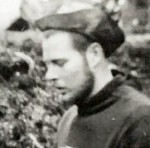 The following extracts taken from early Victoria, British Columbia (BC) newspapers are credited to Leona Taylor for her excellent work in indexing the papers. Full information can be found here: “Index of Historical Victoria Newspapers“, 2007-09.
The following extracts taken from early Victoria, British Columbia (BC) newspapers are credited to Leona Taylor for her excellent work in indexing the papers. Full information can be found here: “Index of Historical Victoria Newspapers“, 2007-09.
As I was collecting this information from the newspaper archive website, I noticed that many articles were in consecutive order and applied to Pachena Point, so I collected them all together here. It is a bit long, but interesting, as it describes the building of a lighthouse from the ground up as they say. Take note of the dates at the end of each article. it surely was not done overnight. More extensive information can be obtained from the actual scanned copies of the newspapers themselves on the above website.
************************************
Dominion Government Steamer Quadra, Captain Hackett, arrived at the government wharf last night, and will today commence loading for Pachena Point, to which the vessel will carry material to be used in the construction of the lighthouse to be built there. It is hoped, by Dec. It is anticipated that 2 days will be occupied in loading the Steamer, and she will leave without delay to endeavor to land the material before the heavy swells make landing too difficult of accomplishment. [Colonist, 1906-10-05] Continue reading Lighthouse History – 26 – Pachena Point (1906-10-05 to 1908-05-24)







